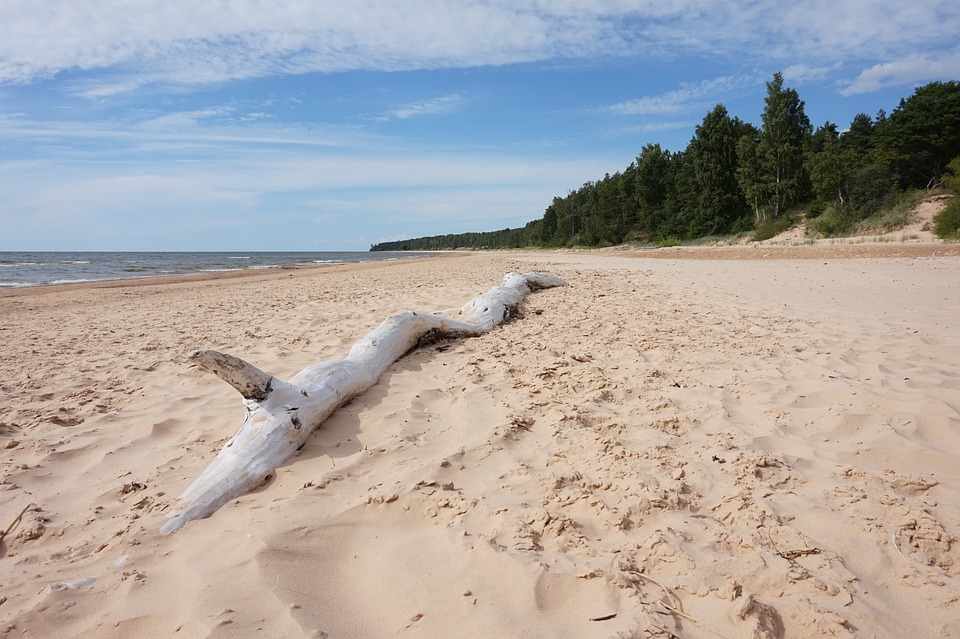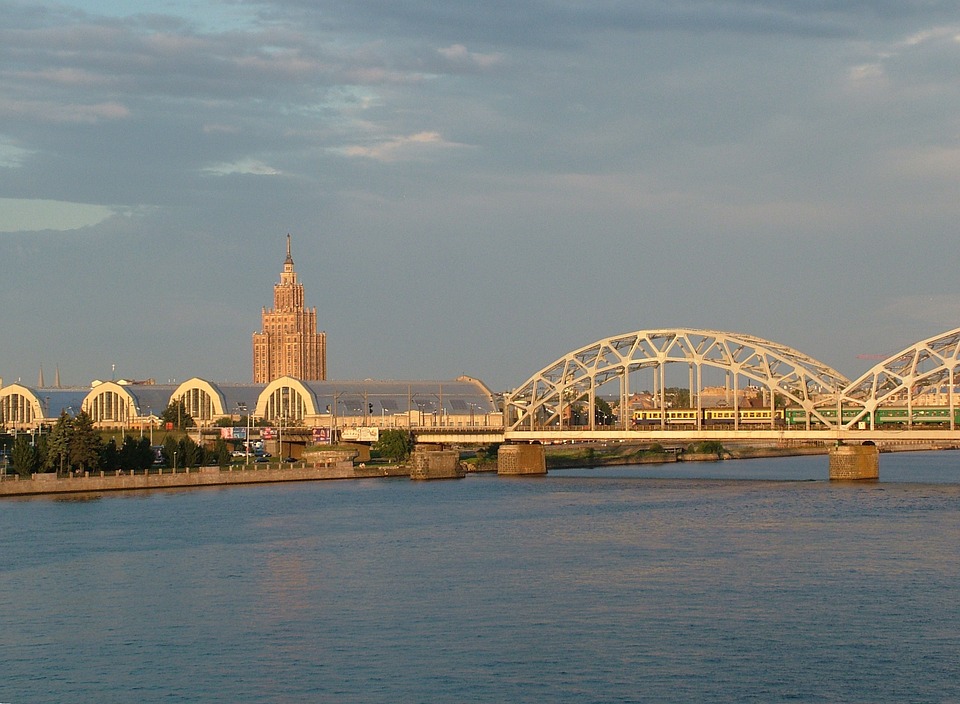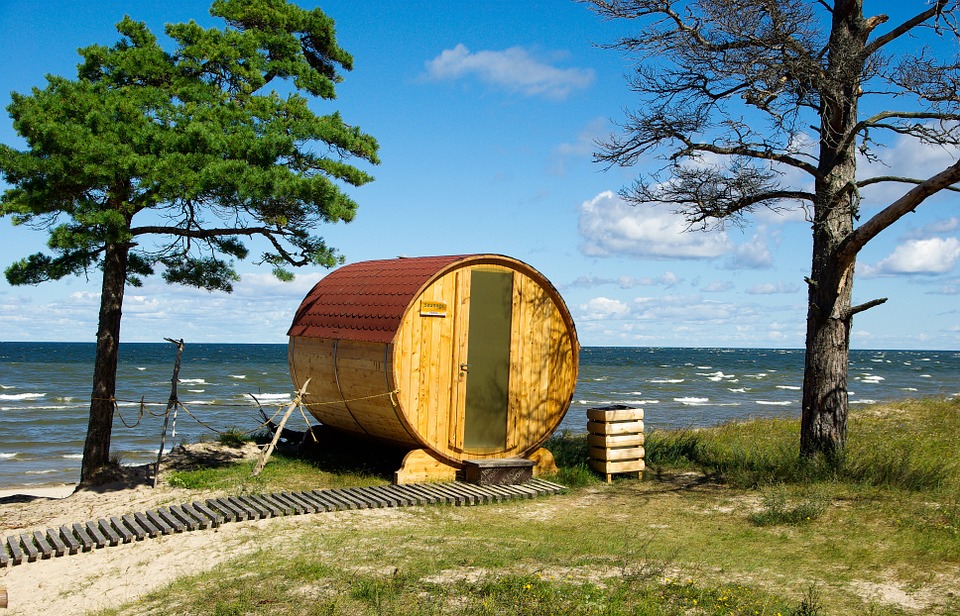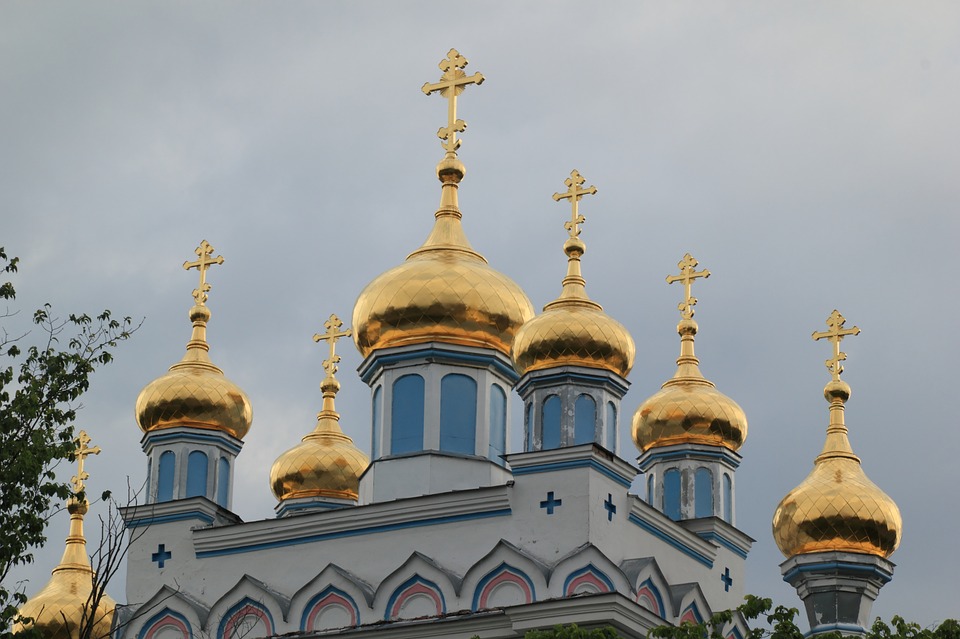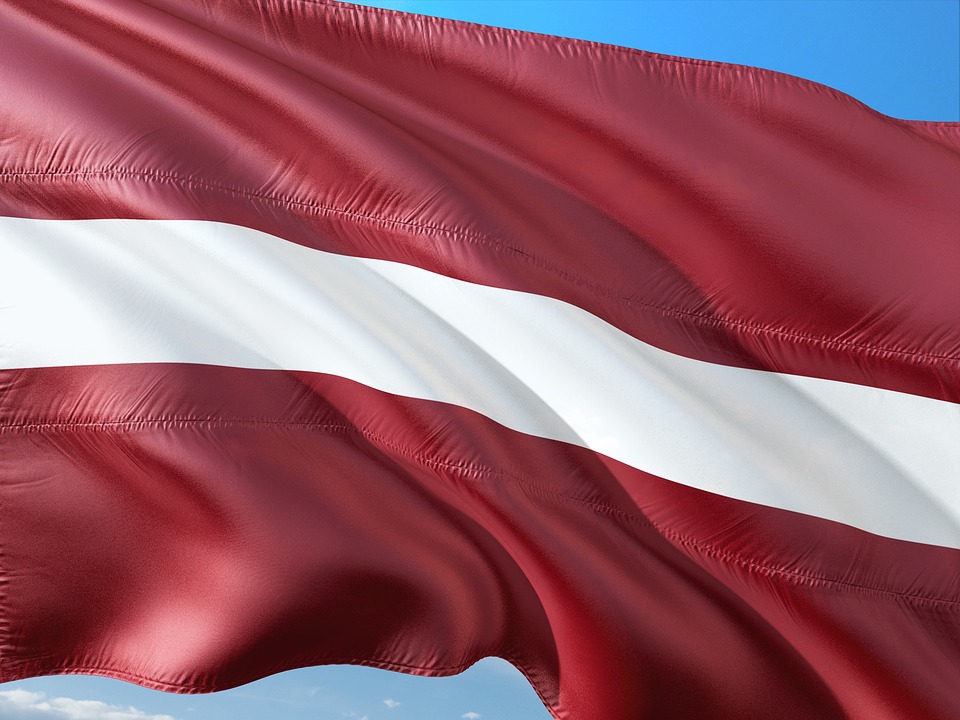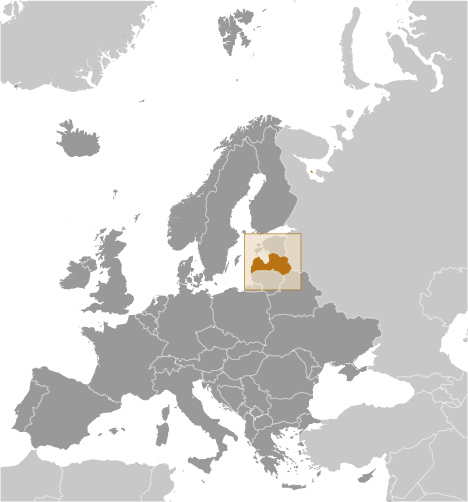Latvia
(Latvijas Republika (Republic of Latvia))

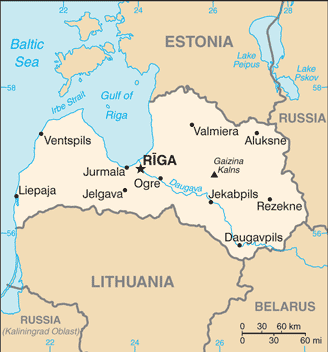






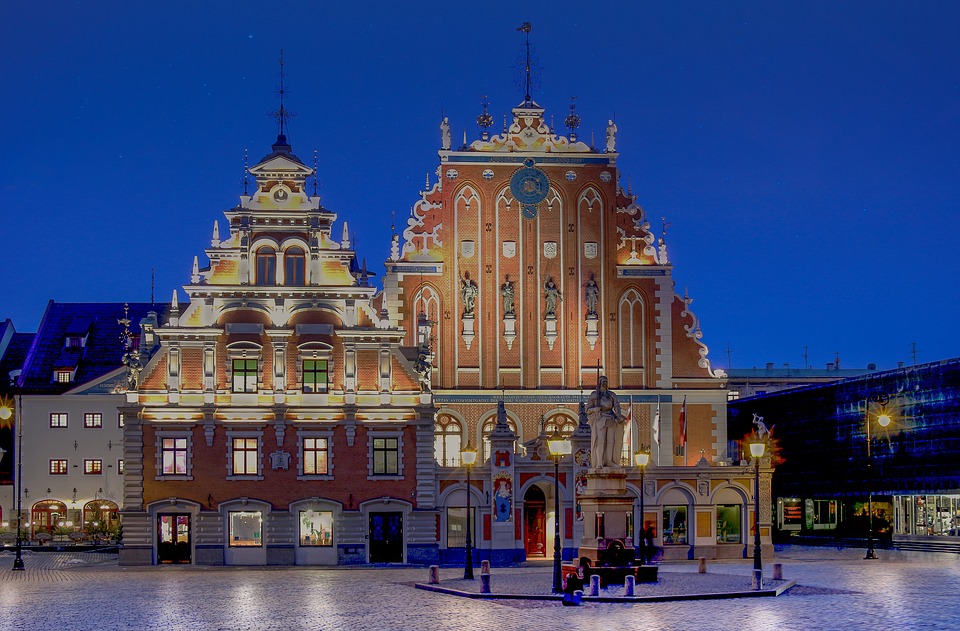
Capital of Latvia: Riga
Population (Estimated July 2012): 2,191,580
Area: 64,589 km2 or 24,926 mi2
Currency: Lats (Ls; Plural Lati)
Official Language: Latvian
Political Information: Parliamentary Republic
Official Religion: No Official Religion (approximately 19.6% of the population are Lutheran, 15.3% are Orthodox, 1% have other Christian beliefs, 0.4% have other religious beliefs and 63.7% have unspecified religious beliefs)
Highest Mountain: Gaiziņkalns at 312m or 1,024 ft
GDP Official Exchange Rate (OER is more precise at gauging a countries economic power)
(Estimated 2011): $27.4 billion (US$) or (GBP)
GDP (OER) Per Capita (per member of the population estimated 2011): (US$) or (GBP)
GDP Purchasing Power Parity (PPP is good for gauging living conditions and use of resources but not as accurate as OER. This data has been calculated based on the sum value of all goods and services produced in the country valued at prices prevailing in the United States)
(Estimated 2011): $34.58 billion (US$) or (GBP)
GDP (PPP) Per Capita (per member of the population estimated 2011): $15,400 (US$) or (GBP)
Time Zone (GMT/UTC): +2:00
Counties/Provinces/States: 110 municipalities (novadi, singular-novads) and 9 cities
municipalities: Adazu Novads, Aglonas Novads, Aizkraukles Novads, Aizputes Novads, Aknistes Novads, Alojas Novads, Alsungas Novads, Aluksnes Novads, Amatas Novads, Apes Novads, Auces Novads, Babites Novads, Baldones Novads, Baltinavas Novads, Balvu Novads, Bauskas Novads, Beverinas Novads, Brocenu Novads, Burtnieku Novads, Carnikavas Novads, Cesu Novads, Cesvaines Novads, Ciblas Novads, Dagdas Novads, Daugavpils Novads, Dobeles Novads, Dundagas Novads, Durbes Novads, Engures Novads, Erglu Novads, Garkalnes Novads, Grobinas Novads, Gulbenes Novads, Iecavas Novads, Ikskiles Novads, Ilukstes Novads, Incukalna Novads, Jaunjelgavas Novads, Juanpiebalgas Novads, Jaunpils Novads, Jekabpils Novads, Jelgavas Novads, Kandavas Novads, Karsavas Novads, Keguma Novads, Kekavas Novads, Kocenu Novads, Kokneses Novads, Kraslavas Novads, Krimuldas Novads, Krustpils Novads, Kuldigas Novads, Lielvardes Novads, Ligatnes Novads, Limbazu Novads, Livanu Novads, Lubanas Novads, Ludzas Novads, Madonas Novads, Malpils Novads, Marupes Novads, Mazsalacas Novads, Mersraga Novads, Nauksenu Novads, Neretas Novads, Nicas Novads, Ogres Novads, Olaines Novads, Ozolnieku Novads, Pargaujas Novads, Pavilostas Novads, Plavinu Novads, Preilu Novads, Priekules Novads, Priekulu Novads, Raunas Novads, Rezeknes Novads, Riebinu Novads, Rojas Novads, Ropazu Novads, Rucavas Novads, Rugaju Novads, Rujienas Novads, Rundales Novads, Salacgrivas Novads, Salas Novads, Salaspils Novads, Saldus Novads, Saulkrastu Novads, Sejas Novads, Siguldas Novads, Skriveru Novads, Skrundas Novads, Smiltenes Novads, Stopinu Novads, Strencu Novads, Talsu Novads, Tervetes Novads, Tukuma Novads, Vainodes Novads, Valkas Novads, Varaklanu Novads, Varkavas Novads, Vecpiebalgas Novads, Vecumnieku Novads, Ventspils Novads, Viesites Novads, Vilakas Novads, Vilanu Novads, Zilupes Novads
cities: Daugavpils, Jekabpils, Jelgava, Jurmala, Liepaja, Rezekne, Riga, Valmiera, Ventspils
Leaders: President Raimonds VEJONIS (since 8 July 2015) with Prime Minister Maris KUCINSKIS (since 11 February 2016); Deputy Prime Minister Arvils ASERADENS (since 11 February 2016)
Additional: Gained independence from the Soviet Union on the 6th of September 1991.
Sources: CIA World Fact Book, Encyclopaedia Britannica.
Latvia
Latvia, a small nation in the Baltic region of Northern Europe, is a country with much to offer visitors seeking a less frequented destination. Its rich history, diverse culture and striking natural landscapes make it an appealing choice for travellers. Latvia shares borders with Estonia to the north, Lithuania to the south, Russia to the east, and Belarus to the southeast.
The capital city, Riga, is renowned for its medieval Old Town and art nouveau architecture, attracting numerous tourists. Beyond the urban centres, Latvia boasts picturesque countryside, charming coastal towns and unspoilt national parks. The country caters to a variety of interests, including history, nature and gastronomy.
Latvia’s complex history has played a significant role in shaping its unique culture and traditions. The country’s past, encompassing ancient pagan rituals and centuries of foreign rule, is evident in its architecture, cuisine and folklore. Latvians are known for their strong sense of national identity and resilience.
Today, Latvia is a member of the European Union and NATO, with a steadily growing economy. The nation’s cultural heritage is celebrated through various festivals, music, dance and traditional crafts. Latvia’s blend of historical charm and modern innovation makes it an intriguing destination for those wishing to explore a less well-known part of Europe.
Summary
- Latvia is a hidden gem in the Baltic region, known for its rich history, natural beauty, and unique culture.
- The history and culture of Latvia are shaped by its diverse influences, including German, Swedish, and Russian, resulting in a unique blend of traditions and customs.
- Latvia boasts stunning natural landscapes and national parks, offering visitors the chance to explore pristine forests, picturesque lakes, and breathtaking coastlines.
- Latvian cuisine is a delightful mix of hearty and comforting dishes, with a focus on locally sourced ingredients and traditional cooking methods.
- From the vibrant capital city of Riga to charming towns and scenic attractions, Latvia offers a diverse range of experiences for travellers to explore and enjoy.
History and Culture of Latvia
Latvia’s history dates back thousands of years, with evidence of human settlement as far back as the Stone Age. Over the centuries, the region has been inhabited by various tribes and peoples, including the ancient Balts, Vikings, Germans, and Russians. In the 13th century, Latvia was conquered by the German Teutonic Order and became part of the Livonian Confederation.
This period of foreign rule left a lasting impact on the country’s culture and architecture. In the 18th century, Latvia came under Russian control and experienced a period of Russification. It wasn’t until the end of World War I that Latvia declared its independence and became a sovereign nation.
Latvia’s cultural heritage is a rich tapestry of influences from its diverse history. The country’s folklore is filled with myths and legends that reflect its pagan roots and Christian traditions. Traditional Latvian music and dance are an integral part of the culture, with vibrant folk festivals held throughout the year.
The Latvian language, which is part of the Baltic branch of the Indo-European language family, is central to the country’s national identity. Latvians take great pride in their language and are known for their literary traditions. The country’s art and architecture also reflect its history, with a mix of medieval castles, art nouveau buildings, and Soviet-era monuments.
From ancient rituals to modern innovations, Latvia’s culture is a testament to its resilience and creativity.
Latvia’s Natural Beauty: Landscapes and National Parks
Latvia is blessed with an abundance of natural beauty, from dense forests and rolling hills to pristine beaches and tranquil lakes. The country’s diverse landscapes make it an ideal destination for outdoor enthusiasts and nature lovers. One of Latvia’s most iconic natural features is its dense forests, which cover over half of the country’s territory.
These ancient woodlands are home to a variety of wildlife, including deer, wild boar, and lynx. In addition to its forests, Latvia is also known for its picturesque coastline along the Baltic Sea. The country’s sandy beaches and rugged cliffs are popular destinations for sunbathing, swimming, and water sports.
Latvia is home to several national parks and nature reserves that showcase the country’s natural beauty. Gauja National Park, located near the town of Sigulda, is the largest national park in Latvia and is known for its stunning landscapes and outdoor activities. Visitors can explore the park’s dense forests, limestone cliffs, and meandering rivers while hiking, cycling, or kayaking.
Another must-visit destination is Kemeri National Park, famous for its unique wetlands and mineral-rich mud baths. The park is a haven for birdwatchers and nature photographers, with over 190 species of birds recorded in the area. Whether you’re interested in hiking through pristine wilderness or relaxing on a sandy beach, Latvia’s natural beauty is sure to leave a lasting impression.
Latvian Cuisine and Culinary Traditions
Latvian cuisine is a reflection of the country’s agricultural heritage and seasonal ingredients. Traditional Latvian dishes are hearty and comforting, often featuring locally sourced meats, fish, grains, and dairy products. Rye bread is a staple in Latvian cuisine and is often served alongside soups, stews, and smoked meats.
One of Latvia’s most famous dishes is grey peas with bacon, a simple yet delicious comfort food that is enjoyed throughout the country. Another popular dish is speķrauši, or bacon buns, which are often served as a snack or appetizer. Latvian cuisine also features an array of fish dishes due to the country’s proximity to the Baltic Sea and numerous rivers and lakes.
Smoked fish, such as herring and salmon, are commonly enjoyed with potatoes or rye bread. Latvians are also known for their love of dairy products, particularly sour cream and cottage cheese. Dairy-based desserts like rūpjmaizes kārtojums (rye bread dessert) and biezpiena sieriņš (curd snack) are popular sweet treats enjoyed by locals and visitors alike.
To accompany their meals, Latvians often drink kvass, a fermented beverage made from rye bread that has been enjoyed for centuries. Whether you’re dining in a cosy countryside tavern or a trendy urban restaurant, Latvian cuisine offers a taste of tradition and local flavours.
Exploring Latvia: Cities, Towns, and Attractions
In addition to its natural beauty, Latvia is home to charming cities and towns that offer a mix of history, culture, and modern amenities. Riga, the capital city, is a vibrant metropolis with a rich architectural heritage and a lively arts scene. The city’s Old Town is a UNESCO World Heritage site and is filled with medieval churches, cobblestone streets, and colourful buildings.
Riga is also known for its art nouveau architecture, with over 800 buildings designed in this distinctive style. Beyond its historic charm, Riga offers visitors a range of cultural attractions, including museums, galleries, theatres, and music venues. Outside of Riga, Latvia is dotted with picturesque towns and villages that offer a glimpse into traditional Latvian life.
Cēsis is a medieval town known for its well-preserved castle ruins and scenic surroundings. The town hosts various cultural events throughout the year, including music festivals and craft fairs. Another must-visit destination is Sigulda, often referred to as the “Switzerland of Latvia” due to its rolling hills and lush forests.
Sigulda is a popular outdoor recreation destination, with opportunities for hiking, cycling, skiing, and bobsledding. Whether you’re exploring historic landmarks or enjoying outdoor activities, Latvia’s cities and towns offer something for every type of traveller.
Latvian Festivals and Celebrations
Latvia has a rich tradition of festivals and celebrations that reflect its cultural heritage and seasonal rhythms. One of the most important events in the Latvian calendar is Midsummer (Jāņi), a pagan festival that celebrates the summer solstice. During this time, people gather in the countryside to sing traditional songs, dance around bonfires, and enjoy festive foods and drinks.
Another popular festival is Līgo Day (Līgo diena), which coincides with Midsummer celebrations and involves decorating homes with birch branches and flowers. In addition to traditional folk festivals, Latvia also hosts a range of cultural events throughout the year. Riga International Film Festival showcases independent films from around the world and attracts filmmakers and cinephiles alike.
For music enthusiasts, the Rīga Jazz Festival features performances by international jazz artists in various venues across the city. Other notable events include the Latvian Song and Dance Festival, which brings together thousands of singers and dancers from across the country for a spectacular showcase of traditional music and dance. Whether you’re interested in ancient rituals or contemporary arts, Latvia’s festivals offer a unique insight into the country’s cultural traditions.
Practical Information for Travelling to Latvia
Travelling to Latvia is relatively straightforward for visitors from most countries. The country is part of the Schengen Area, which allows for visa-free travel for up to 90 days within a 180-day period for citizens of Schengen member states as well as several other countries outside of Europe. Visitors from countries outside of the Schengen Area may need to obtain a visa before travelling to Latvia.
The official currency in Latvia is the euro (EUR), which can be easily exchanged at banks or currency exchange offices throughout the country. The best time to visit Latvia largely depends on your interests and preferences. Summer (June to August) is the most popular time to visit due to the warm weather and long daylight hours.
This time of year is ideal for outdoor activities such as hiking, cycling, and beach outings. Autumn (September to November) offers beautiful foliage colours and harvest festivals throughout the countryside. Winter (December to February) brings snow-covered landscapes and opportunities for skiing and winter sports in regions like Sigulda and Cēsis.
Spring (March to May) brings blooming flowers and milder temperatures perfect for exploring cities like Riga. When it comes to getting around Latvia, public transportation options include buses, trains, trams, trolleybuses, and taxis in urban areas like Riga. Outside of major cities, renting a car can be a convenient way to explore Latvia’s countryside at your own pace.
English is widely spoken in tourist areas but having some basic knowledge of Latvian phrases can be helpful when interacting with locals. Overall, travelling to Latvia offers an opportunity to discover a unique blend of history, culture, nature, and culinary delights in one of Europe’s best-kept secrets.
FAQs
What is the capital of Latvia?
The capital of Latvia is Riga, which is also the largest city in the country.
What is the population of Latvia?
As of 2021, the population of Latvia is estimated to be around 1.9 million people.
What is the official language of Latvia?
The official language of Latvia is Latvian.
What is the currency used in Latvia?
The currency used in Latvia is the Euro (EUR) since the country joined the Eurozone in 2014.
What are some popular tourist attractions in Latvia?
Some popular tourist attractions in Latvia include Riga Old Town, Rundale Palace, Gauja National Park, Jurmala Beach, and the Latvian Ethnographic Open Air Museum.
What is the climate like in Latvia?
Latvia has a temperate seasonal climate, with mild summers and cold winters. The country experiences all four seasons, with temperatures ranging from -5°C in winter to 25°C in summer.
What are some traditional Latvian dishes?
Traditional Latvian dishes include grey peas with bacon, speķrauši (smoked bacon), sklandrausis (a sweet pastry), and various types of rye bread.
What are some major industries in Latvia?
Major industries in Latvia include agriculture, forestry, manufacturing, information technology, and tourism. The country is also known for its amber and timber exports.
Political Boundaries of Latvia: Provinces, Districts, or Historical Boundaries.
Latvia, a country situated in the Baltic region of Northern Europe, is renowned for its rich history and diverse cultural heritage. The political boundaries of Latvia play a crucial role in the governance and administration of the country. These boundaries are defined...
Terrain and Topography of Latvia: mountains, valleys, and plains.
Latvia, a small country in the Baltic region of Northern Europe, is renowned for its diverse and picturesque terrain. The country is characterised by its lowlands, plains, hilly regions, and valleys, as well as its national parks and mountainous areas. The terrain of...
Climate Zones Of Latvia: Different Climate Regions Of Latvia
Latvia, a small nation in the Baltic region of Northern Europe, is characterised by its diverse climate zones. The country experiences four distinct climate zones, each with its own unique characteristics and impact on the environment. These climate zones comprise the...
History of Latvia
Latvia, situated in the Baltic region of Northern Europe, possesses a rich history extending back to ancient times. The area now known as Latvia was initially settled by Baltic tribes around 2000 BC. These tribes, including the Latgalians, Selonians, Semigallians and...
Natural Resources of Latvia: Where Natural Resources are Located in Latvia
Latvia, a small nation situated in the Baltic region of Northern Europe, possesses a diverse array of natural resources. The country’s landscape encompasses verdant forests, productive agricultural land, mineral deposits and plentiful water resources. These...
Cultural or Historical Sites of Latvia: Important Cultural Landmarks or Historical Sites in Latvia
Latvia, a small nation in the Baltic region of Northern Europe, boasts a rich and diverse cultural heritage. From mediaeval castles to Baroque palaces, Latvia‘s historical sites provide insight into the country’s past and its unique blend of influences...
Population Density of Latvia
Latvia, a small nation in the Baltic region of Northern Europe, has a population density of approximately 30 people per square kilometre. With a total land area of 64,589 square kilometres and a population of around 1.9 million, Latvia is one of the least densely...

